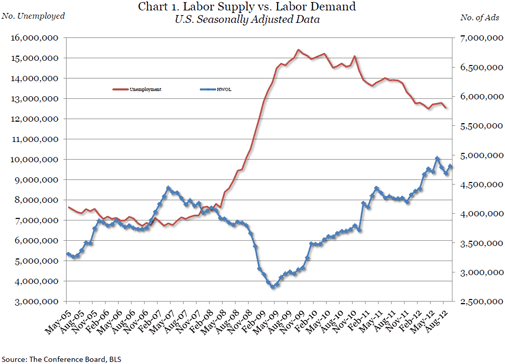
There are 4,813,400 jobs advertised in the U.S. right now (as of Sept. 30th), yet 12.1 million people looking for work (source: U.S. Department of Labor).

"What gives?," you might ask.
Some very smart people are working on this problem, including two I chatted with recently: LinkedIn CEO Jeff Weiner and California Lt. Governor Gavin Newsom. (Thanks, Joanna Rees for your cocktail party.) I encourage you to read up on their perspectives on unemployment.
I've got an additional angle on this: Every one of those 4.8 million job ads running right now is a potential social network ready to go viral to the 12.1 million people looking for work!
Let me explain.
Job openings (even those old newspaper help wanted ads) have always had a community surrounding them consisting of three different parties:
The Hiring Team -- The hiring team (the manager, human resources and other team members).
The Job Candidates -- Typically, many hundreds (sometimes thousands) of people need to hear about a job in order for the employer to find the right candidate. The candidates found these job ads in newspapers (beginning in the 1600's) and more recently on job boards like Craigslist and Monster.com.
The "Connectors" -- These are well-networked people who connect candidates and employers (many do it for free (they are just good people) and then many others are paid for it (these are called recruiters).
The 4.8 million job ads -- many of which reside on Craigslist, Monster.com and other job boards -- are largely static, hard to find an unattractive to share. That is all about to change due to five breakthrough trends:
1. Social Recruiting -- Increasingly, every job will have at least two social media components: a "social bar" that allows anyone to share the job through sites like Facebook, Twitter; and LinkedIn and connectability: a link between the job seeker and the employer's hiring team (i.e., the ability to see the people who can connect the job seeker to the hiring team).
2. Visual Recruiting -- More and more innovative companies are hiring through the use of video and pictures.
Fast-growing Retargeter.com uses a video for each of its hires, such as this designer role in San Francisco in which candidates candidates get to see the hiring manager and other team members (including the CEO) discuss the role.
Jobs with videos and pictures are more likely to be shared across social network portals, including (in the case of videos) YouTube and its 490 million users.
3. Job Newsfeeds -- Generation Y and future professionals interact differently than the rest of us. They post short bursts of text through text messaging, instant messaging, Facebook status updates, and tweets. Facebook has made these famous as "newsfeeds" and Twitter calls them "streams."
Just like there is a comment/newsfeed area for every news story on HuffPo, football game on ESPN, and birthday of a friend of yours on Facebook, so too will there be a newsfeed around every job -- and every comment/update in the newsfeed will of course be shareable across social networks.
4. More Google-Friendly Jobs -- Many of the 4.8 million job openings out there have been very hard to find: most have cryptic URLs and some are buried in databases There are now new tools, such as Jobs2Web, that allow jobs to have Plain English URLs and be more easily found by Google and other search engines.
5. Crowdsourcing Jobs -- More and more jobs will be filled through crowdsourcing. In the future, job descriptions will be crowdsourced by a combination of the hiring team (filling out the basic fields of information and providing pictures and video), the candidates (who will ask comment and ask questions via newsfeeds) and "connectors" (who will give endorsements of the specific job).
Crowds will help create the job and find the right candidates!
In short, the 4.8 million job ads out there will all turn into their own social networks that will live for the normal 60 to 90 days that most jobs take to get filled.
Early results of treating a job as its own social network are intriguing.
Check out this recent community manager job at Salesforce.com (which Forbes recently voted #1 in innovation). It generated the following results:
- 14,400 views
- 167 tweets
- 80 Facebook likes
- 4 Pins on Pinterest
- Dozens of comments in a newsfeed
And, of course, Salesforce.com filled the job (with 2 different people!)!
How You Can Help
Every one of you can help turn these 4.8 million social networks of jobs into actual jobs and hence lower unemployment!
If you are an employer lucky enough to be hiring, I encourage you to "socialize" your job through LinkedIn, Facebook, and Twitter (including naming the hiring manager and listing their social profile); visualize your job through your own careers site and sites such as Glassdoor; and to embrace an open dialogue "newsfeed" about your career opportunities through Twitter, Facebook, and blogs.
If you are a job candidate, make sure you have your own profile with employer background through sites like LinkedIn, Facebook, and Twitter -- and push employers to make the identity of their hiring team known.
Finally, if you are neither hiring nor job seeking, you can be a "connector" of jobs. To be a good connector, you can socially share jobs your friends and colleagues are creating, consider giving them and their job a "shout-out" endorsement through social media, and introduce your job seeking friends to hiring employers.
This isn't a short-term fix -- we're talking about the "long game" here. But if we unleash the power of the idea behind a social network around every job, we can more quickly put 4.8 million people to work!
